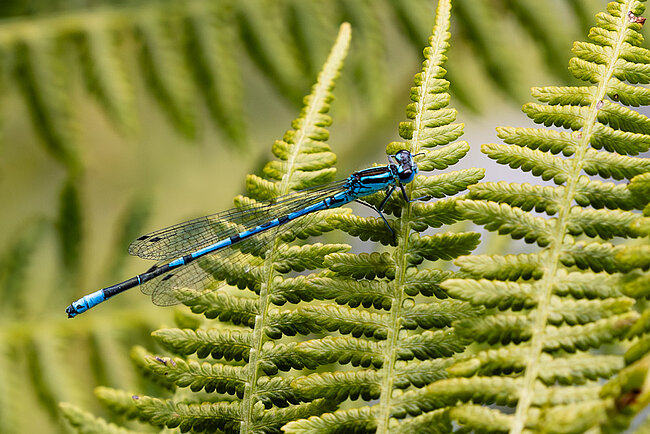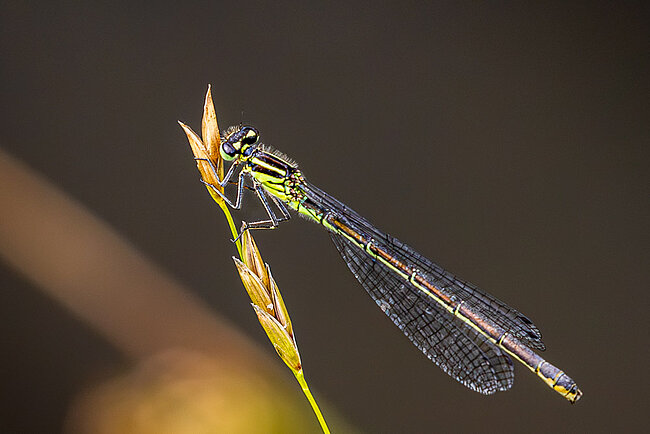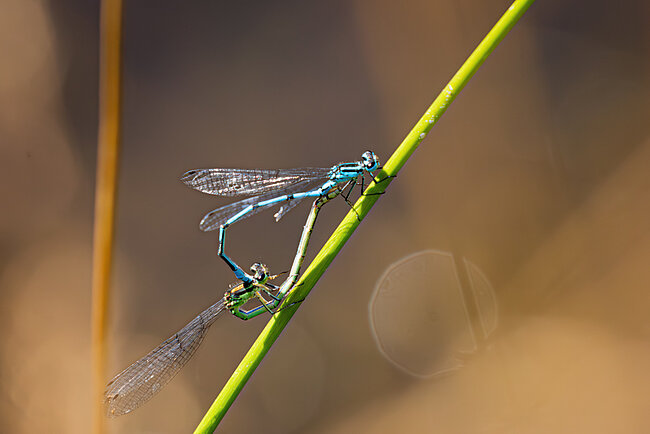It has a body length of 33 to 35 mm with a wingspan of 30 to 50 mm.
Like all azure damselflies, it has the typical seam pattern on both sides of the thorax. The antehumeral stripes are continuous and narrow.
The male has a blue basic colouration on the thorax and abdomen. On the abdominal segment S3 there is a horseshoe-like pattern, which can vary. Segments S3 to S6 have thin black rings and lateral stripes. Segment S7 has a broad, narrow blue ring at the border to S6. S8 is completely blue.
The female usually has a green base colouration, more rarely a blue one. THE dark form has a black upper side of the abdomen, in the light form the front border of the abdominal segments is blue.
It colonises a wide variety of small standing bodies of water, but also the banks of larger standing bodies of water. It can also be found in slow-flowing waters or calm areas of larger watercourses.
Literature:
- K.-D. Dijkstra, Libellen Europas, 2. Auflage, Haupt Verlag Bern 2021,ISBN 3-258-08219-6, S. 123 f
- K. Sternberg / R. Buchwald, Libellen Baden-Württembergs, Bd. 1, Ulmer Verlag Stuttgart 2000, ISBN 3-8001-3508-6, S. 278–287
- H. Wildermuth, A. Martens, Die Libellen Europas, Quelle & Meyer Wiebelsheim 2018, 3-494-01690-9, S. 211 ff
Websites:


